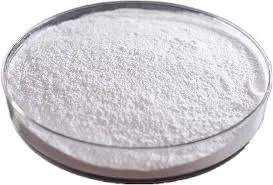
ធ្នូ . 28, 2024 14:19 Back to list
hydroxyethyl cellulose
Understanding Hydroxyethyl Cellulose Properties, Applications, and Importance
Hydroxyethyl cellulose (HEC) is a non-ionic, water-soluble polymer derived from cellulose, a naturally occurring polymer abundant in plants. HEC has gained significant attention in various industries due to its unique properties and versatile applications. This article explores the characteristics, applications, and significance of hydroxyethyl cellulose in different fields.
Properties of Hydroxyethyl Cellulose
HEC is synthesized through the etherification of cellulose with ethylene oxide. This modification introduces hydroxyethyl groups into the cellulose structure, significantly enhancing its solubility in water. One of the remarkable properties of HEC is its ability to form thick, viscous solutions even at low concentrations. The viscosity of HEC solutions can be tailored by adjusting its molecular weight and concentration, making it a highly customizable material.
Another notable characteristic of HEC is its stability across a wide range of pH levels and temperatures. It remains effective in both acidic and alkaline environments, which makes it suitable for diverse formulations. Additionally, HEC is non-toxic and biocompatible, adding to its appeal in applications related to health and personal care.
Applications of Hydroxyethyl Cellulose
1. Cosmetic and Personal Care Products In the cosmetic industry, HEC is widely used as a thickening agent and stabilizer in lotions, creams, gels, and shampoos. Its ability to enhance the texture and consistency of formulations makes it a popular choice among cosmetic chemists. Furthermore, HEC contributes to the overall performance of products by improving dispersibility and providing a smooth application.
hydroxyethyl cellulose

2. Pharmaceutical Formulations Hydroxyethyl cellulose plays a crucial role in pharmaceutical applications. It is often used as a binder in tablet formulations and as a thickening agent in ointments and gels. HEC can also adjust the release properties of active pharmaceutical ingredients, allowing for controlled drug delivery systems. Its biocompatibility ensures that it does not adversely affect the efficacy or safety of medications.
3. Construction Industry In construction, HEC is utilized as an additive in cement and gypsum-based materials. When added to these mixtures, HEC improves workability, reduces water consumption, and enhances the final strength of the construction materials. Its water-retention properties also help in preventing early drying of mortars and plasters, which can lead to cracking.
4. Food Industry Hydroxyethyl cellulose is finding its place in the food industry, where it serves as a thickener, stabilizer, and emulsifier. It is used in various food products, including sauces, dressings, and beverages, enhancing texture and preventing separation. HEC's ability to maintain moisture content is particularly beneficial for enhancing food quality and extending shelf life.
5. Paints and Coatings HEC is commonly used in paint formulations as a rheology modifier. It helps in achieving the desired viscosity and flow properties, ensuring even application and optimal performance in coating applications. Its water solubility allows for easy cleanup and less environmental impact compared to solvent-based thickeners.
Conclusion
Hydroxyethyl cellulose is a versatile and valuable ingredient across numerous industries, from cosmetics to pharmaceuticals to construction. Its unique properties, such as water solubility, viscosity modification, and biocompatibility, make it an essential component in a variety of formulations. As researchers continue to explore and innovate with HEC, its applications are likely to expand further, solidifying its role as a critical substance in both industrial and consumer products. Understanding HEC and its capabilities not only highlights the importance of this polymer but also underscores the potential for future advancements and innovations within multiple sectors.
-
Unlocking the Benefits of HPMC Products: A Gateway to Versatile Applications
NewsAug.07,2025
-
Unleashing the Potential of HPMC Ashland: A Comprehensive Look
NewsAug.07,2025
-
Tile Bonding Cellulose: The Key to Superior Adhesion and Durability
NewsAug.07,2025
-
Hydroxypropyl Methylcellulose Powder: The Versatile Component in Modern Pharmaceuticals
NewsAug.07,2025
-
Hydroxyethyl Cellulose: The Versatile Solution for Various Industries
NewsAug.07,2025
-
Hydroxyethyl Cellulose (HEC): The Versatile Polymer for Various Applications
NewsAug.07,2025







